How to Master the Art of Gesture Drawing
Mastering the art of gesture drawing is like learning to dance with your pencil. It’s about capturing the rhythm, the energy, and the essence of movement in a way that makes your artwork come alive. Whether you’re a seasoned artist or a curious beginner, embracing gesture drawing can transform your ability to express emotion and action in your illustrations. Imagine being able to convey the swiftness of a sprinting athlete or the delicate balance of a dancer in just a few strokes! This article will guide you through essential techniques and tips that will help you unlock the secrets of gesture drawing, giving your artwork a dynamic flair that draws viewers in.
At its core, gesture drawing is a practice that emphasizes the movement and posture of the subject. Think of it as capturing a fleeting moment in time, where every line and curve tells a story. This technique allows artists to focus not just on the physical form of their subjects, but also on the energy and emotions that those forms convey. In just a few minutes, you can create a sketch that reflects the essence of life itself. By honing your skills in gesture drawing, you can develop a deeper understanding of how figures move and interact, which is crucial for any artist looking to create compelling artwork.
Gesture plays a pivotal role in conveying emotion and action within your artwork. It's like the heartbeat of your drawing; without it, your figures may appear stiff and lifeless. By mastering gesture, you can enhance the overall impact of your illustrations, making them resonate with viewers on a deeper level. When you understand how to effectively use gesture, you can create works that not only depict reality but also evoke feelings and tell stories. Imagine a portrait that captures the joy of a child playing or the tension of an athlete poised for action—these moments are brought to life through the power of gesture.
To effectively capture movement, artists must learn to observe and translate dynamic poses into quick sketches. This process is akin to being a photographer, but instead of using a camera, you're using your keen observation skills and artistic intuition. Start by watching people in motion—how they walk, run, or even sit. Take mental notes of the angles, the curves, and the overall flow of their movements. When you sit down to draw, aim to replicate that energy on paper. The goal is not perfection, but rather the essence of the pose. Remember, every quick sketch is a step towards mastering the fluidity of motion.
Quick sketches are essential in gesture drawing as they encourage spontaneity and fluidity. Think of them as warm-up exercises for your artistic muscles! Set a timer for one to five minutes and challenge yourself to capture the essence of a pose within that time frame. This practice will help you to loosen up and get into the flow of your drawing. You might be surprised at how much you can convey in just a few strokes. The key is to focus on the overall shape and movement rather than getting bogged down in details. Embrace the freedom that comes with quick sketches; they are a gateway to discovering your unique artistic voice.
Focusing on the flow of lines and shapes in a figure can significantly enhance the sense of movement in your gesture drawings. Instead of viewing the figure as a collection of parts, try to see it as a continuous flow of energy. Imagine tracing the path of a dancer’s arm as it gracefully sweeps through the air. By emphasizing the curves and angles that define movement, you can create drawings that feel alive. Practice drawing with a continuous line, allowing your pencil to dance across the page without lifting it. This technique can help you develop a more intuitive understanding of how to capture the fluidity of motion.
Selecting the right tools and materials can significantly impact your gesture drawing practice. While you don't need fancy supplies to get started, having a few quality materials can make a difference in your experience. Here’s a quick overview of some essential items:
| Material | Description |
|---|---|
| Pencils | Graphite pencils (2B to 6B) for varying line quality. |
| Paper | Sketch paper or newsprint for quick sketches; heavier paper for more detailed work. |
| Erasers | Kneaded erasers for gentle corrections without damaging paper. |
| Digital Tools | Tablets and styluses for those who prefer digital drawing. |
There are various techniques that can improve your gesture drawing skills. Experimenting with different methods will help you find what works best for you. Here are a few techniques to consider:
- Contour Drawing: Focus on the outline of the subject without lifting your pencil.
- Timed Sketches: Set a timer to challenge yourself and improve your speed.
- Using Reference Materials: Study photographs or live models to understand movement better.
Timed exercises challenge artists to draw figures within a set time limit, encouraging quick thinking and decision-making. This method can be exhilarating! It forces you to prioritize the most important aspects of the pose, honing your ability to capture the essence of movement. Start with short intervals, gradually increasing the time as you become more comfortable. You'll find that this practice not only improves your skills but also builds your confidence as an artist.
Digital tools offer unique advantages for gesture drawing. With the right software and a tablet, you can easily experiment with different styles and techniques. Many programs allow you to adjust brush sizes and opacity, giving you greater flexibility in your drawings. Plus, the undo button is a lifesaver! Digital gesture drawing can also facilitate sharing and collaboration with other artists, broadening your creative horizons.
Even experienced artists can fall into common pitfalls while gesture drawing. Here are a few frequent mistakes to watch out for:
- Focusing Too Much on Detail: Remember, gesture drawing is about capturing movement, not perfection.
- Neglecting Warm-Ups: Jumping straight into complex poses can hinder your flow; always warm up first!
- Forgetting to Observe: Take time to watch real-life movement; it’s invaluable for improving your skills.
Q: How long should I spend on each gesture drawing?
A: It varies, but most artists recommend spending between 1 to 5 minutes on each sketch to capture the essence without getting bogged down in details.
Q: Do I need special materials for gesture drawing?
A: Not at all! While quality materials can enhance your experience, you can start with basic pencils and paper.
Q: Can gesture drawing help with other types of art?
A: Absolutely! The skills you develop in gesture drawing can improve your overall figure drawing, character design, and even painting.
Q: How often should I practice gesture drawing?
A: Consistency is key! Aim to practice a few times a week to see significant improvement over time.

Understanding Gesture Drawing
Gesture drawing is more than just a technique; it's a way to breathe life into your art. This fundamental practice focuses on capturing the movement and posture of your subject, whether it’s a human figure, an animal, or even an inanimate object. Imagine trying to catch a fleeting moment, like a dancer mid-leap or a cat stretching in the sun. That’s the essence of gesture drawing—it's about seizing that energy and translating it onto paper.
At its core, gesture drawing emphasizes the energy and fluidity of forms. It’s not about perfection; it’s about capturing the spirit of the subject in a limited time frame. You might only have a few minutes to sketch a pose, which forces you to prioritize what’s truly important: the essence of movement. This urgency can lead to more dynamic and expressive drawings. Think of it as a race against time, where your pencil becomes an extension of your observation skills.
To truly understand gesture drawing, it’s essential to develop your observation skills. This means training your eye to see beyond the surface details and recognizing the underlying structure and movement of the figure. Ask yourself questions like: What is the main action? Where is the weight distributed? How does the pose convey emotion? By honing these observational skills, you’ll be able to translate what you see into quick sketches that resonate with life and motion.
Gesture drawing can be practiced with various subjects, but it’s particularly effective when working with live models. The unpredictability of a live model adds an exciting challenge, as they may shift positions or change poses unexpectedly. This unpredictability can help you become more adaptable and responsive in your drawing. Remember, the goal isn’t to create a masterpiece in these short sessions; rather, it’s about developing a keen sense of movement and form.
In addition, it’s important to remember that gesture drawing can be a stepping stone to more detailed work. Once you’ve captured the essence of the movement, you can build upon it with more refined techniques. The quick sketches serve as a foundation, allowing you to explore the intricacies of your subject in later stages of your artwork.
So, whether you’re a seasoned artist or just starting out, embracing gesture drawing can be a fun and rewarding experience. It encourages you to let go of the fear of making mistakes and instead focus on the joy of creation. So grab your sketchbook, find a dynamic pose, and start capturing those gestures!
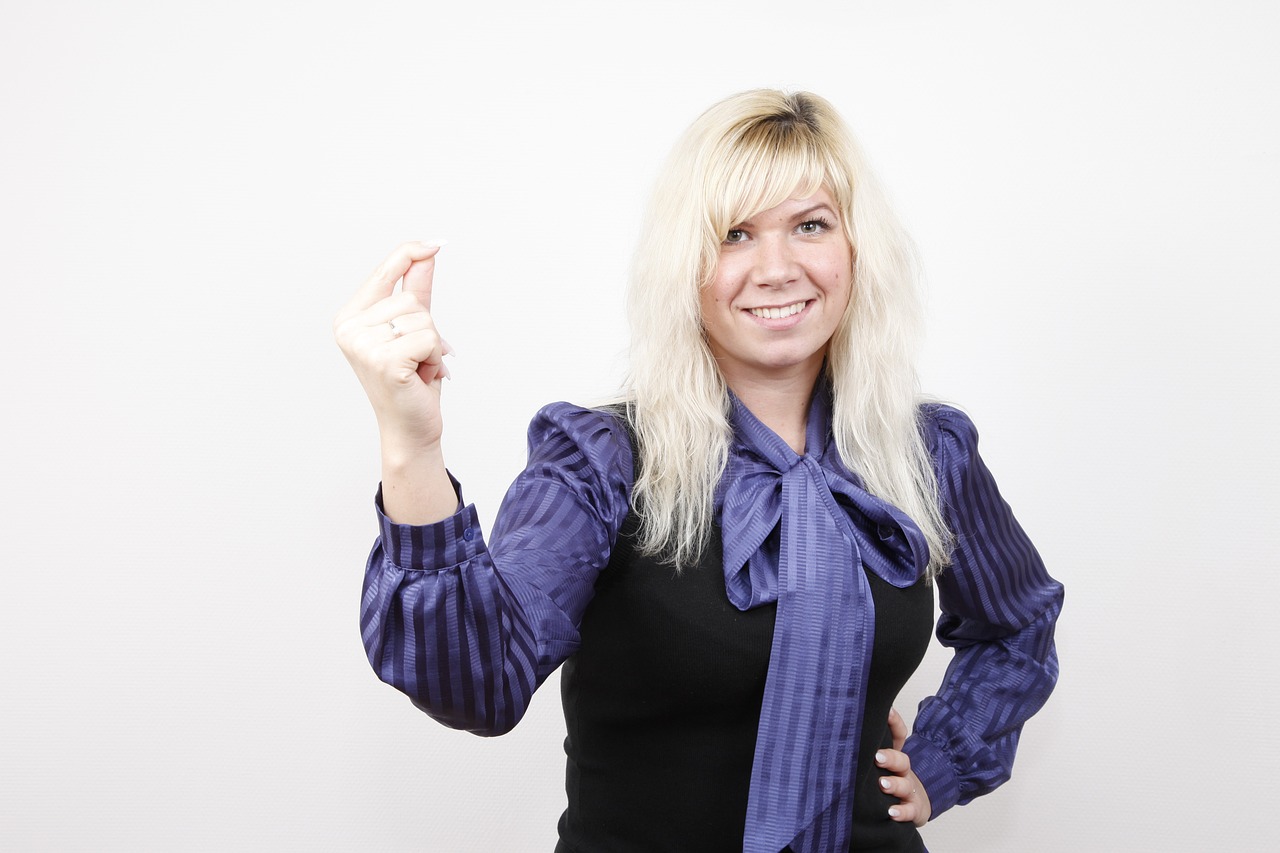
The Importance of Gesture in Art
When we think about art, we often focus on the details—the intricate lines, the vibrant colors, or the textures that bring a piece to life. However, one of the most crucial elements that can make or break a work of art is the gesture. Gesture drawing is not merely about capturing a subject's physical form; it’s about conveying the very essence of movement and emotion. It’s like trying to catch a fleeting moment, much like trying to hold onto a wisp of smoke. The moment you think you’ve got it, it slips away. This is where the power of gesture comes into play.
Gesture drawing allows artists to express dynamic movement and the energy of their subjects. It’s about understanding how a body moves through space and how that movement can be translated onto paper. Imagine watching a dancer perform; their every twist and turn tells a story. Similarly, in art, gesture captures that narrative, allowing viewers to feel the emotion behind the pose. Without gesture, a drawing can feel static and lifeless, lacking the vibrancy that makes it resonate with the audience.
Moreover, gesture is essential in establishing a connection between the artwork and the viewer. When an artist successfully conveys movement, it invites the audience to engage with the piece on a deeper level. They can almost feel the rush of wind as a figure leaps or the tension in a pose that suggests impending action. This connection can evoke feelings, memories, and even dreams, making the artwork not just a visual experience but an emotional one as well.
To illustrate the importance of gesture in art, consider the following points:
- Conveys Emotion: Gesture can express a wide range of feelings, from joy to despair, simply through the posture and movement of the figures.
- Enhances Storytelling: In narrative art, gesture can help to tell a story without words, allowing viewers to interpret the scene in their own way.
- Creates Dynamic Composition: A well-placed gesture can lead the viewer's eye through the artwork, creating a sense of flow and movement.
In conclusion, mastering the art of gesture is not just about improving your drawing skills; it’s about learning to see the world through a different lens. It’s about capturing the fleeting moments that define our experiences and translating them into a visual language that speaks to others. As you practice gesture drawing, remember that it’s not solely about perfection; it’s about capturing the spirit of movement and the emotions that come with it. So, the next time you pick up your pencil, think about the story you want to tell and let your gestures guide you.
1. What is gesture drawing?
Gesture drawing is a technique used by artists to capture the essence of a subject's movement and posture in a short amount of time. It emphasizes the flow and energy of the figure rather than focusing on detailed rendering.
2. Why is gesture important in art?
Gesture is important because it conveys emotion, enhances storytelling, and creates dynamic compositions. It allows viewers to connect with the artwork on a deeper level.
3. How can I improve my gesture drawing skills?
To improve your gesture drawing skills, practice quick sketches, focus on the flow of lines, and experiment with timed exercises. Observing live models or using reference materials can also enhance your skills.

Capturing Movement
Capturing movement in gesture drawing is like trying to catch a fleeting moment in time; it requires keen observation and quick execution. When you look at a subject, whether it’s a dancer mid-leap or a dog in full sprint, the challenge lies in translating that dynamic energy onto paper in a way that feels alive. To do this effectively, artists must hone their ability to observe the subtleties of movement and the posture of the figure. Think of it as a dance between your eyes and your hand, where you are not just copying what you see but interpreting it with your own unique flair.
One of the best ways to improve your ability to capture movement is through dedicated practice. Start by spending a few minutes observing a moving subject—this could be a person, an animal, or even an object in motion. Try to notice the key positions and the way the body shifts and flows. Once you have a clear mental image, grab your sketchbook and begin to translate those observations into quick sketches. Remember, the goal is not perfection; it’s about capturing the essence and energy of the movement. Here are some tips to keep in mind:
- Break it down: Focus on the major shapes and lines that define the figure. Look for the action lines that convey movement.
- Use your whole arm: When drawing, engage your entire arm rather than just your wrist. This allows for longer, sweeping lines that can express motion more fluidly.
- Emphasize the action: Don’t be afraid to exaggerate certain aspects of the pose. This can enhance the feeling of movement and make your drawing more dynamic.
Additionally, incorporating timed exercises can help you become more adept at capturing movement quickly. Set a timer for 30 seconds and draw the figure in that time frame. This practice forces you to prioritize the essential elements of the pose, helping to train your eye to see what truly matters in conveying motion. Over time, you’ll find that your sketches not only become faster but also more expressive.
One effective technique is to utilize gesture lines. These are sweeping lines that represent the direction of movement and the energy of the pose. They can serve as a foundation for your drawing, guiding the rest of your work. For example, if you're sketching a runner, draw a line that follows the trajectory of their motion from their foot to their arm. This line becomes a visual representation of the energy being exerted.
Ultimately, capturing movement is about more than just drawing what you see; it’s about understanding the underlying rhythms and flows of life. With each stroke, you have the opportunity to tell a story, to express emotion, and to breathe life into your artwork. So grab your sketchbook, find a moving subject, and let your pencil dance across the page!
Q: What materials are best for gesture drawing?
A: While you can use any materials, many artists prefer soft pencils or charcoal for their ability to create fluid lines. Newsprint is also a popular choice for practice due to its affordability.
Q: How long should I spend on gesture drawings?
A: Gesture drawings are typically quick studies, so aim for anywhere between 30 seconds to 2 minutes per sketch. The goal is to capture the essence of the movement, not to create a detailed rendering.
Q: Can I use photographs for gesture drawing practice?
A: Yes! Photographs can be a useful tool for studying movement. However, try to also practice with live subjects to develop your observation skills further.

Using Quick Sketches
Quick sketches are the lifeblood of gesture drawing, providing artists with a means to capture the essence of their subjects in a fleeting moment. Think of them as a snapshot of movement, where the goal is not to create a polished piece but to harness the energy and dynamism of a pose. When you engage in quick sketching, you're essentially having a conversation with the subject, allowing the lines and curves to flow freely from your hand to the page.
One of the most exciting aspects of quick sketches is their spontaneity. You don't have the luxury of time to overthink every stroke. Instead, you learn to trust your instincts and let your pencil dance across the paper. This practice not only improves your ability to observe but also enhances your hand-eye coordination. It’s like learning to play a musical instrument; the more you practice, the more fluid and natural it becomes.
To get started with quick sketches, consider setting a timer. You might begin with just a minute or two per sketch, gradually increasing the time as you become more comfortable. This method encourages you to focus on the most critical elements of the pose. Here are some tips to keep in mind:
- Limit your time: Start with 30 seconds to 2 minutes to force quick thinking.
- Use simple shapes: Break down the figure into basic shapes to simplify the process.
- Emphasize movement: Capture the flow and energy rather than worrying about details.
Another great way to practice is by using reference images or live models. If you’re drawing from life, try to keep your focus on the overall gesture rather than getting caught up in the minutiae of the figure. Remember, the goal is to convey motion and emotion. You can also experiment with different mediums—charcoal, ink, or even digital tools—to see which one feels more natural for your quick sketches.
Lastly, don't be afraid to make mistakes! Each sketch is a stepping stone in your artistic journey. Embrace the imperfections as they often lead to unexpected discoveries. Over time, you will notice a significant improvement in your ability to capture the essence of movement, making your gesture drawings more vibrant and alive.

Focus on Flow
When it comes to gesture drawing, one of the most captivating aspects is the flow of lines and shapes that embody the essence of movement. Think of it like a river—its currents and eddies create a sense of direction and purpose. In the same way, your drawings should convey the natural rhythm of the subject you’re depicting. To truly capture this flow, you need to train your eye to see beyond the static pose and recognize the dynamic energy that exists within it.
One effective way to enhance the flow in your gesture drawings is to use long, sweeping lines that connect various parts of the figure. Instead of focusing on individual details, try to create a sense of unity by allowing your lines to flow from one part of the body to another. This technique not only adds energy to your sketches but also helps to establish a harmonious relationship between different elements of the figure. Imagine drawing a dancer in mid-twirl; the lines should reflect the grace and motion of their movement, rather than just the outline of their body.
Additionally, consider the concept of negative space. By observing the spaces around and between the subject, you can create a more complete representation of the figure. This approach allows you to focus on how the body interacts with its surroundings, which can significantly enhance the sense of flow in your drawings. For instance, when sketching a running athlete, pay attention not only to the limbs but also to the space created by the legs lifting off the ground and the arms swinging in rhythm.
To practice focusing on flow, try the following exercises:
- Continuous Line Drawing: Without lifting your pencil from the page, attempt to draw the figure in one fluid motion. This technique forces you to consider the overall shape and flow rather than getting bogged down in details.
- Gesture Warm-Ups: Spend a few minutes before each drawing session doing quick, light sketches that emphasize the flow of movement. Aim for 30-second sketches where you capture the essence of the pose without worrying about perfection.
- Study Dance or Sports: Observing live performances or athletic events can provide a wealth of inspiration. Focus on how the body moves and the lines created during those movements.
Incorporating these practices into your routine will not only improve your ability to convey flow but will also enrich your overall gesture drawing skills. Remember, the goal is to create drawings that resonate with energy and life, just like the movements you’re trying to capture. So, the next time you sit down to draw, let the flow guide your hand and watch as your sketches transform into vibrant representations of motion.
Q: What is gesture drawing?
A: Gesture drawing is a quick sketching technique that captures the essence of movement and form in a subject, focusing on the overall energy rather than details.
Q: How long should I spend on a gesture drawing?
A: Typically, gesture drawings are done in short time frames, ranging from 30 seconds to a few minutes, to encourage spontaneity and fluidity.
Q: What materials are best for gesture drawing?
A: While any drawing tool can be used, many artists prefer soft pencils, charcoal, or even digital tools for their flexibility and ease of use.
Q: Can I use photos for gesture drawing practice?
A: Yes, using reference photos can be helpful, but try to focus on capturing the movement and energy depicted in the image rather than getting lost in details.
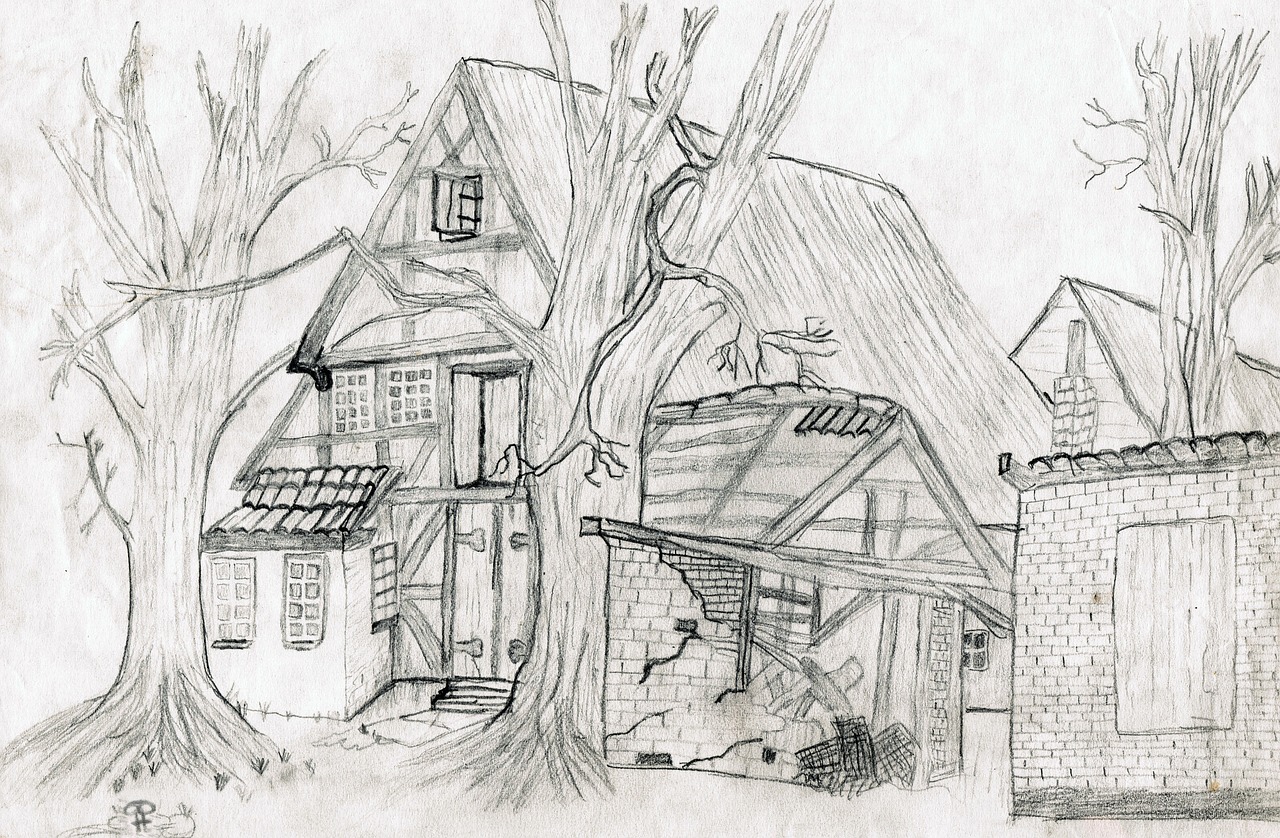
Tools and Materials
When it comes to mastering the art of gesture drawing, the right tools and materials can make a world of difference. Just like a chef needs the right knives to create a culinary masterpiece, an artist needs the appropriate supplies to bring their vision to life. So, what should you have in your arsenal? Let's dive in!
First and foremost, you'll want to select a few high-quality pencils. Graphite pencils in various hardness levels (like 2B, 4B, and 6B) are fantastic for capturing different shades and line qualities. Softer pencils (like 6B) allow for darker lines and shading, while harder pencils (like H or 2H) can create finer, lighter details. It's all about finding the right balance for your style.
Next up is your choice of paper. The texture and weight of the paper can significantly affect your drawing experience. For gesture drawing, a smooth, heavier paper (like a sketch or drawing pad with at least 80 lb weight) works wonders. It allows for quick strokes and erases cleanly, which is essential when you’re working fast. Some artists even prefer newsprint for its affordability and ease of use during practice sessions.
Additionally, consider incorporating a charcoal stick or pastels into your toolkit. These materials can add a different texture and depth to your gesture drawings, allowing for more expressive lines and shading. Charcoal, in particular, is excellent for creating bold, dynamic strokes that can enhance the sense of movement in your sketches.
For those who want to take their gesture drawing into the digital realm, investing in a graphics tablet and appropriate software (like Adobe Photoshop or Procreate) can be a game changer. Digital tools allow you to experiment with different brushes and colors without the mess of traditional materials. Plus, they offer features like layers and undo options, which can be incredibly helpful for refining your sketches.
Finally, don’t underestimate the value of a good eraser and a blending stump. An eraser can help you correct mistakes and lighten areas of your drawing, while a blending stump can smooth out your lines and create softer transitions between shades. These little tools can elevate your sketches from basic to breathtaking.
In summary, having the right tools and materials can significantly enhance your gesture drawing practice. Whether you prefer traditional or digital methods, equipping yourself with quality supplies will help you capture the energy and fluidity of movement with confidence. Remember, it's not just about the tools; it's how you use them that truly matters!
- What type of paper is best for gesture drawing? A heavier weight paper (at least 80 lb) with a smooth texture is recommended for gesture drawing, as it allows for quick strokes and easy erasing.
- Do I need to use expensive materials? Not necessarily! While quality materials can enhance your work, you can start with affordable options and upgrade as you progress in your skills.
- Can I practice gesture drawing digitally? Absolutely! Digital tools offer unique advantages, including flexibility and ease of editing, making them a great option for gesture drawing.
- How often should I practice gesture drawing? Consistency is key! Try to practice gesture drawing several times a week to build your skills and confidence over time.
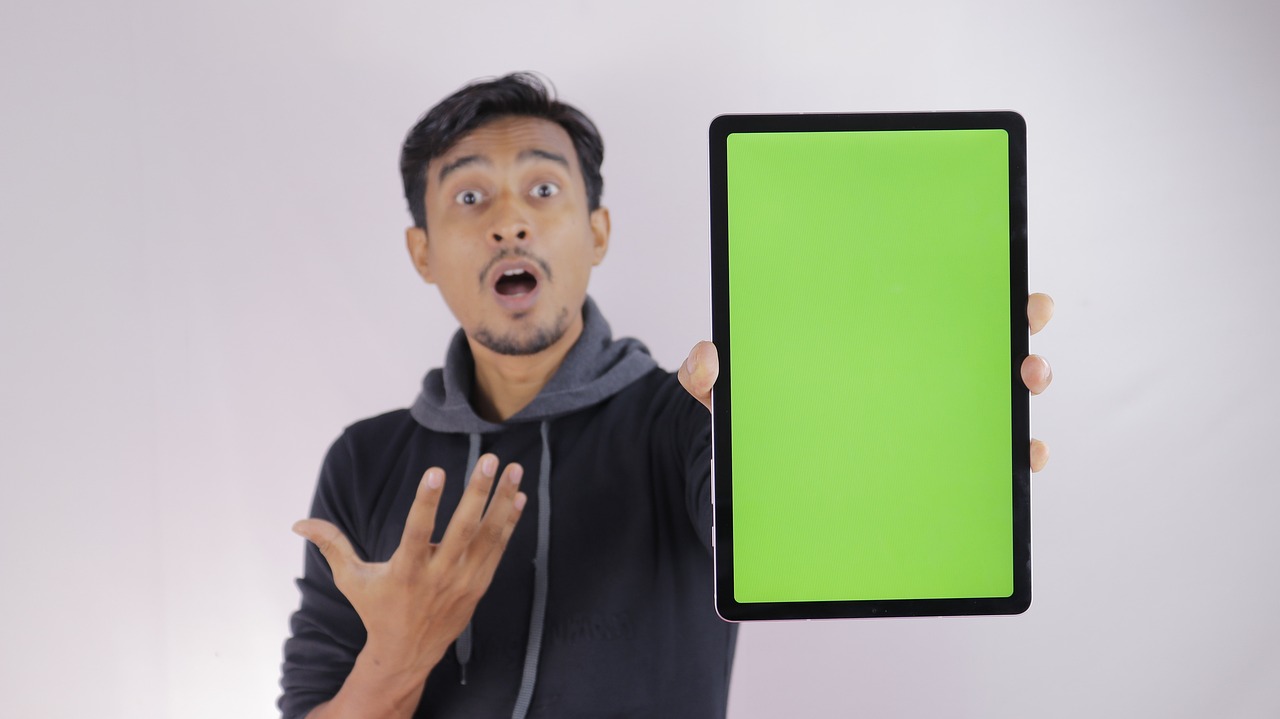
Techniques for Effective Gesture Drawing
When it comes to mastering gesture drawing, the right techniques can make all the difference. It's not just about putting pencil to paper; it’s about understanding the nuances of movement and capturing that fleeting energy. One effective technique is contour drawing, where you focus on the outline of a figure without lifting your pencil. This method forces you to observe the subject closely, allowing you to translate that observation into a fluid representation of movement. Think of it as tracing the path of a dancer's movement with your eyes before committing it to paper.
Another powerful method is timed sketches. Setting a timer can feel like a high-pressure game, but it’s one of the best ways to enhance your ability to capture the essence of a pose quickly. Start with short intervals, say 30 seconds, and gradually increase the time as you become more comfortable. This practice not only improves your speed but also hones your instinct for identifying the most dynamic aspects of a pose.
Incorporating reference materials into your practice is also crucial. Whether it's photographs, videos, or live models, having a reference can provide context and inspiration. Try to observe how different poses convey various emotions. For instance, a figure hunched over may express sadness, while an outstretched pose can evoke joy or freedom. By studying these references, you can develop a deeper understanding of how to convey emotion through gesture.
Additionally, consider using a combination of traditional and digital tools. Digital platforms often come with features that can enhance your drawing experience, such as layers, undo options, and a variety of brushes. These tools can help you experiment with different styles and techniques without the fear of making permanent mistakes. For instance, you can create a rough sketch and then refine it, allowing for a more fluid and dynamic representation of your subject.
To summarize, effective gesture drawing techniques include:
- Contour Drawing: Focus on outlines to enhance observation.
- Timed Sketches: Set time limits to improve speed and decision-making.
- Reference Materials: Use various sources to understand poses and emotions.
- Digital Tools: Leverage technology for flexibility and experimentation.
By experimenting with these techniques, you’ll find your own unique style emerging, allowing you to capture the energy and essence of movement in your gesture drawings effectively. Remember, the key is to practice consistently and not be afraid to make mistakes. Each sketch is a stepping stone toward mastery!

Timed Gesture Exercises
Timed gesture exercises are an exhilarating way to boost your drawing skills and embrace the spontaneity that defines gesture drawing. Imagine being in a race against time, where every second counts, and you have to capture the essence of movement before it slips away! These exercises challenge you to draw figures within a set time limit, typically ranging from just a few seconds to a couple of minutes. This method not only sharpens your observation skills but also enhances your ability to make quick decisions about form and movement.
When you engage in timed exercises, you might feel a little pressure at first, but that’s the beauty of it! It pushes you out of your comfort zone and forces you to focus on the most critical aspects of your subject. Instead of getting bogged down in details, you learn to identify the overall shape, posture, and flow of the figure. This is where the magic happens—your drawings start to breathe with life and energy!
Here’s how you can implement timed gesture exercises in your practice:
- Set a Timer: Use a timer on your phone or a stopwatch. Start with 30 seconds for each pose and gradually increase the time as you become more comfortable.
- Use a Variety of Poses: Choose a mix of poses—some dynamic and others more relaxed. This variety will help you adapt to different movements and expressions.
- Limit Your Tools: Use only a pencil or a pen to avoid getting distracted by colors or shading. This helps you concentrate on lines and forms.
Consider creating a schedule that includes these timed exercises regularly. For instance, you could dedicate 15 minutes a day to this practice, allowing for a few rounds of quick sketches. You might start with five 30-second poses, then work your way up to longer poses as you gain confidence. This routine can drastically improve your ability to capture movement and expression in your artwork.
Additionally, you can invite friends or fellow artists to join you in these exercises. Not only does this create a fun and competitive atmosphere, but it also allows for feedback and shared learning. You might even discover new techniques from observing how others approach the same poses!
Remember, the goal is not perfection but rather the exploration of movement. So, don’t be afraid to make mistakes—embrace them! Each sketch is a stepping stone toward mastering the art of gesture drawing. Over time, you’ll see significant improvements in your ability to convey action and emotion, making your artwork more engaging and dynamic.
- What is the ideal duration for timed gesture exercises? Start with 30 seconds and gradually increase to 1-2 minutes as you improve.
- Can I use reference images for timed exercises? Yes, using reference images can help you practice capturing movement accurately.
- How often should I practice timed gesture exercises? Aim for at least 15 minutes a day to see consistent improvement.
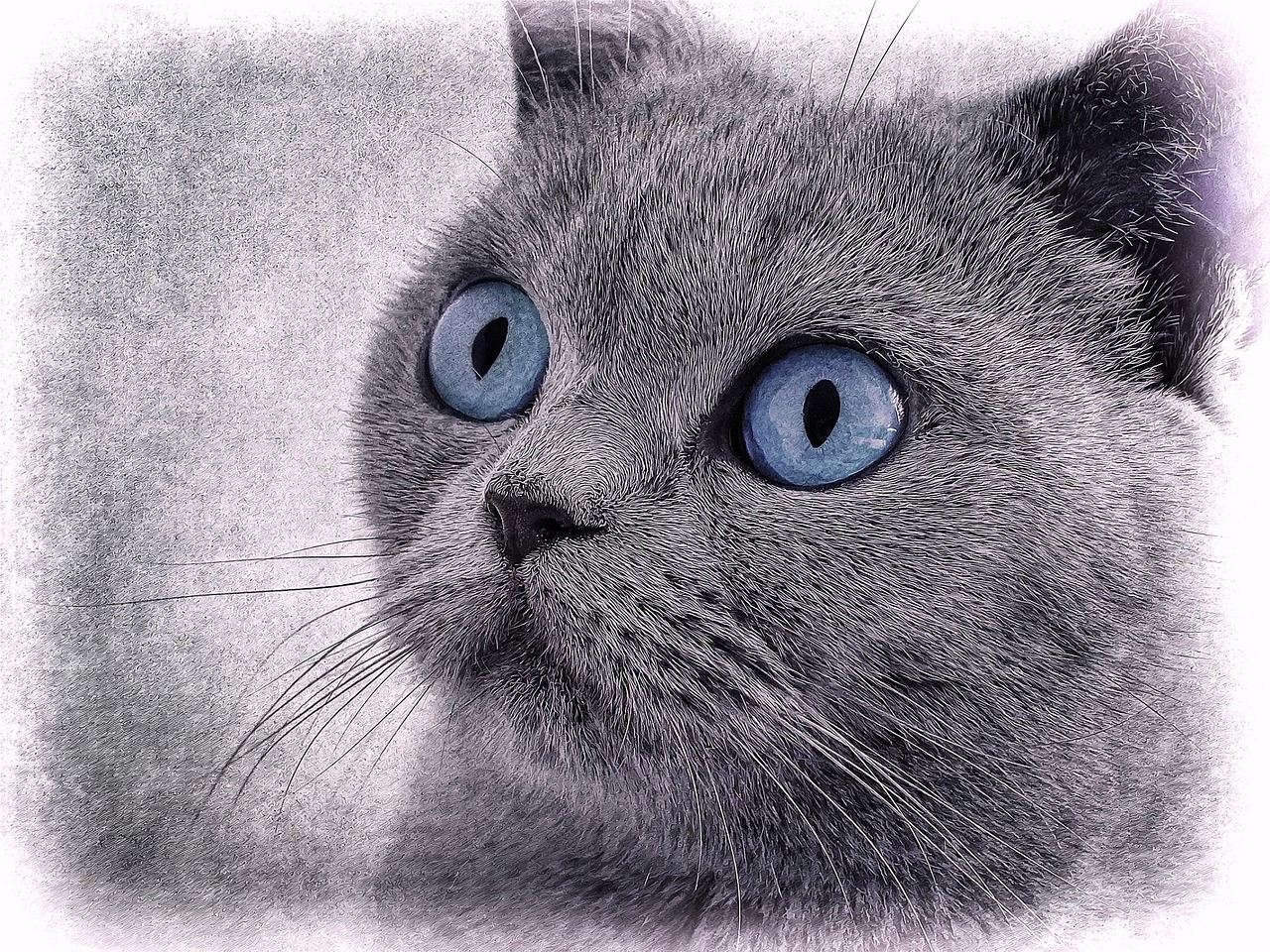
Incorporating Digital Tools
In today's digital age, artists have a plethora of tools at their disposal, making gesture drawing not only more accessible but also more versatile. The integration of digital tools into your drawing practice can open up new avenues for creativity and efficiency. Imagine having the ability to undo a stroke, experiment with colors, or even animate your sketches—all with just a few clicks. This is the magic of digital drawing!
One of the most significant advantages of using digital tools is the flexibility they offer. For instance, software like Adobe Photoshop or Procreate allows you to create layers, which means you can build your gesture drawings without the fear of permanently altering your work. Want to adjust the pose or tweak the proportions? No problem! Just move the layer around until it feels right. This flexibility encourages experimentation, which is essential in mastering gesture drawing.
Moreover, many digital drawing platforms come equipped with brushes and tools specifically designed for gesture drawing. These tools can mimic the feel of traditional materials while providing the added benefits of digital technology. For example, a brush that simulates charcoal can give you that rich texture while allowing for easy adjustments and corrections. Here’s a brief comparison of some popular digital tools:
| Software | Features | Best For |
|---|---|---|
| Procreate | Intuitive interface, customizable brushes, and animation tools | iPad users seeking a natural drawing experience |
| Adobe Photoshop | Extensive features, layer management, and a wide variety of brushes | Professional artists needing advanced editing capabilities |
| Clip Studio Paint | Excellent for comic artists, animation tools, and 3D models | Artists focused on comics or manga |
In addition to software, using a digital tablet can significantly enhance your gesture drawing experience. Tablets like the Wacom or iPad Pro with Apple Pencil provide pressure sensitivity, allowing for a range of line weights and styles that mimic traditional drawing. This tactile feedback helps maintain that connection between the artist and the medium, which is often lost when drawing on a screen.
Don't forget about the wealth of online resources available for artists looking to improve their skills. Websites like Skillshare or Udemy offer courses specifically on digital gesture drawing, providing tutorials and tips from seasoned professionals. Engaging with these resources can help you understand how to effectively use digital tools while developing your unique style.
Ultimately, incorporating digital tools into your gesture drawing practice is about finding what works best for you. Whether you prefer the feel of traditional mediums or the versatility of digital art, the key is to experiment and discover how these tools can enhance your artistic expression. So grab your tablet, fire up your favorite software, and let your imagination run wild!
- What is gesture drawing? Gesture drawing is a technique used by artists to capture the essence of movement and form in a short amount of time.
- Do I need expensive tools to start gesture drawing? No, you can start with basic materials like pencils and paper. As you progress, you can explore digital tools.
- How long should I spend on a gesture drawing? Gesture drawings are typically quick sketches, often completed in 30 seconds to 2 minutes.
- Can I use digital tools for traditional-style gesture drawing? Absolutely! Many digital programs offer brushes that replicate traditional media.
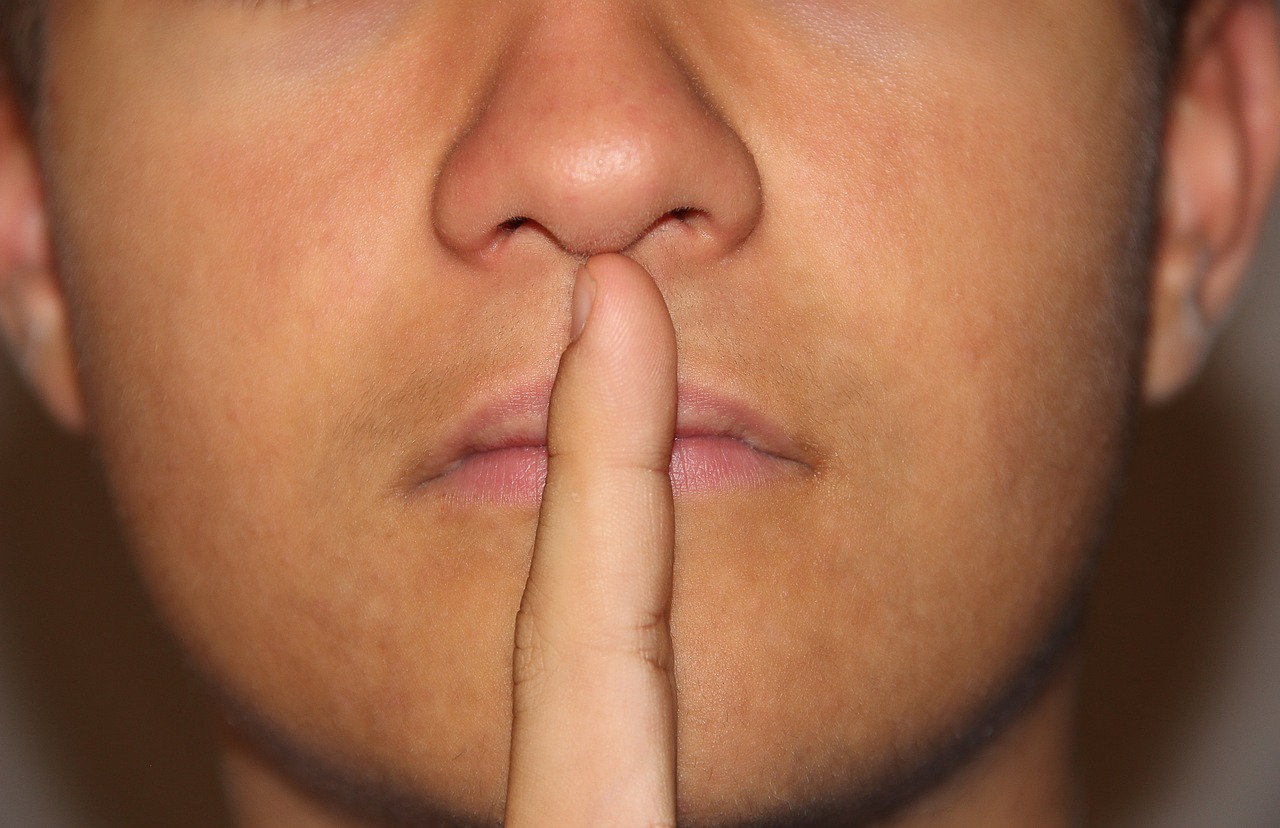
Common Mistakes to Avoid
When it comes to gesture drawing, even seasoned artists can stumble over some common mistakes that can hinder their progress. One of the most frequent errors is neglecting the essence of movement. Many artists get caught up in the details, trying to render a figure too precisely instead of capturing its energy and flow. Remember, gesture drawing is about the overall impression of movement rather than a detailed anatomical study. Think of it like catching a fleeting moment in a photograph; you want to capture the feeling rather than the specifics.
Another pitfall is overthinking the process. When you start to second-guess your strokes or worry about making mistakes, you lose the spontaneity that makes gesture drawing exciting. Embrace the freedom that comes with quick sketches! Allow yourself to make bold, sweeping lines that convey the motion and emotion of your subject. It's okay to mess up; those mistakes can lead to breakthroughs in your understanding of form and flow.
Additionally, many artists fail to vary their line quality. Sticking to the same weight and style of line can make your drawings feel flat and lifeless. Experiment with different line thicknesses and textures to add depth and interest. Think of your lines as the brushstrokes of a painter; they should reflect the dynamics of the pose. For instance, a quick, energetic pose might warrant a thicker, more expressive line, while a delicate, subtle pose may require finer, softer strokes.
Another common mistake is forgetting to warm up. Just like athletes need to stretch before a game, artists benefit from warming up their hands and their minds. Spend a few minutes doing quick, loose sketches before diving into your main practice. This not only helps to get your creative juices flowing but also prepares your hand for the fluidity required in gesture drawing. Warm-up sketches can be as simple as drawing circles, lines, or even simple figures in motion.
Lastly, failing to observe the subject closely can lead to missed opportunities in your drawings. Spend time studying the model or reference material before you start sketching. Notice the subtle shifts in posture, the angles of limbs, and the way the body moves. This observation will translate into your sketches, making them more dynamic and true to life. To aid in this process, consider using a checklist to guide your observations:
| Observation Checklist | Details to Note |
|---|---|
| Body Angles | Look for how limbs are positioned in relation to the torso. |
| Weight Distribution | Observe where the weight is placed; is the figure leaning or balanced? |
| Facial Expression | Capture the emotion conveyed through the face. |
| Clothing Movement | Notice how fabric drapes and moves with the body. |
By being mindful of these common mistakes, you can significantly improve your gesture drawing skills and create more compelling, dynamic artwork. Remember, practice makes perfect, and each sketch is a step toward mastering the art of gesture drawing!
Q: How long should I spend on each gesture drawing?
A: It varies, but generally, 30 seconds to 2 minutes is ideal for quick gesture sketches. The key is to capture the essence of the pose without getting bogged down in details.
Q: What is the best way to practice gesture drawing?
A: Regular practice is essential. Try setting aside time each day for gesture drawing, using live models or reference photos. Consider joining a local life drawing class for real-time practice.
Q: Can I use digital tools for gesture drawing?
A: Absolutely! Digital tools can enhance your gesture drawing experience. Software like Procreate or Adobe Fresco offers features that can help you experiment with line quality and colors effectively.
Q: Is gesture drawing only for figure drawing?
A: Not at all! While it's commonly used for figures, gesture drawing can be applied to any subject that has movement, including animals, plants, and even abstract concepts.
Frequently Asked Questions
- What is gesture drawing?
Gesture drawing is a quick sketching technique that captures the essence of movement and form in a subject. It focuses on the overall flow and posture rather than fine details, allowing artists to convey energy and emotion effectively.
- Why is gesture drawing important for artists?
Gesture drawing is crucial because it helps artists understand and represent the dynamics of movement and emotion in their work. It enhances their ability to create lively and expressive figures, making their artwork more engaging and impactful.
- How can I improve my gesture drawing skills?
Improving gesture drawing skills can be achieved through regular practice, such as timed sketches and quick poses. Observing live models or using reference images can also sharpen your ability to capture movement swiftly and accurately.
- What materials should I use for gesture drawing?
For gesture drawing, it’s best to use materials that allow for quick and fluid strokes. Pencils, charcoal, or even digital tools on a tablet can be effective. Choose paper that suits your medium, whether it’s smooth for pencils or textured for charcoal.
- What are common mistakes in gesture drawing?
Common mistakes include focusing too much on detail instead of capturing the essence of movement, neglecting the flow of lines, and spending too much time on a single sketch. Being aware of these pitfalls can help you improve your gesture drawing practice.
- Can I use digital tools for gesture drawing?
Absolutely! Digital tools offer unique advantages, such as the ability to easily undo mistakes and experiment with different styles. Software and tablets can enhance your workflow and allow for more dynamic gesture drawing techniques.



















